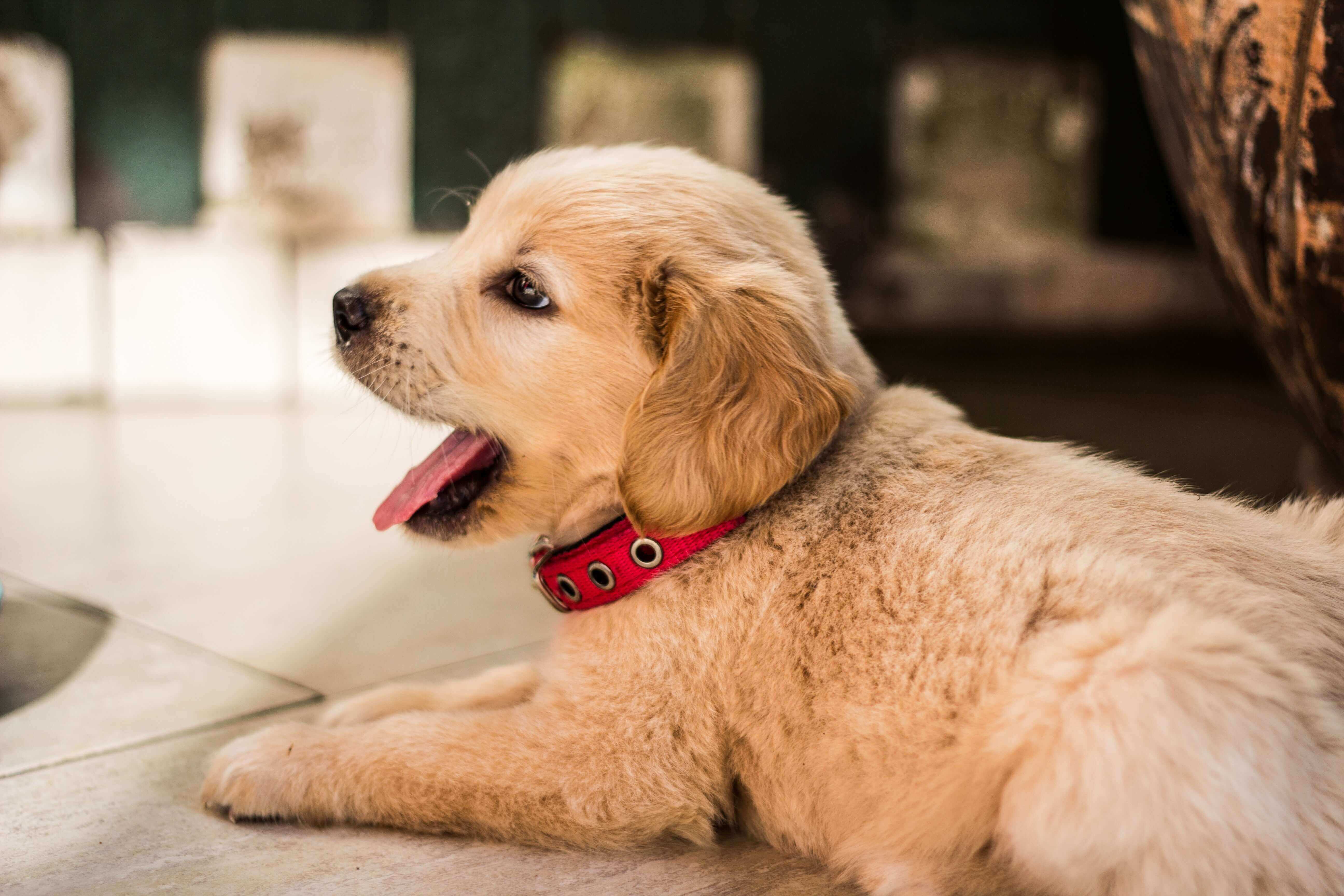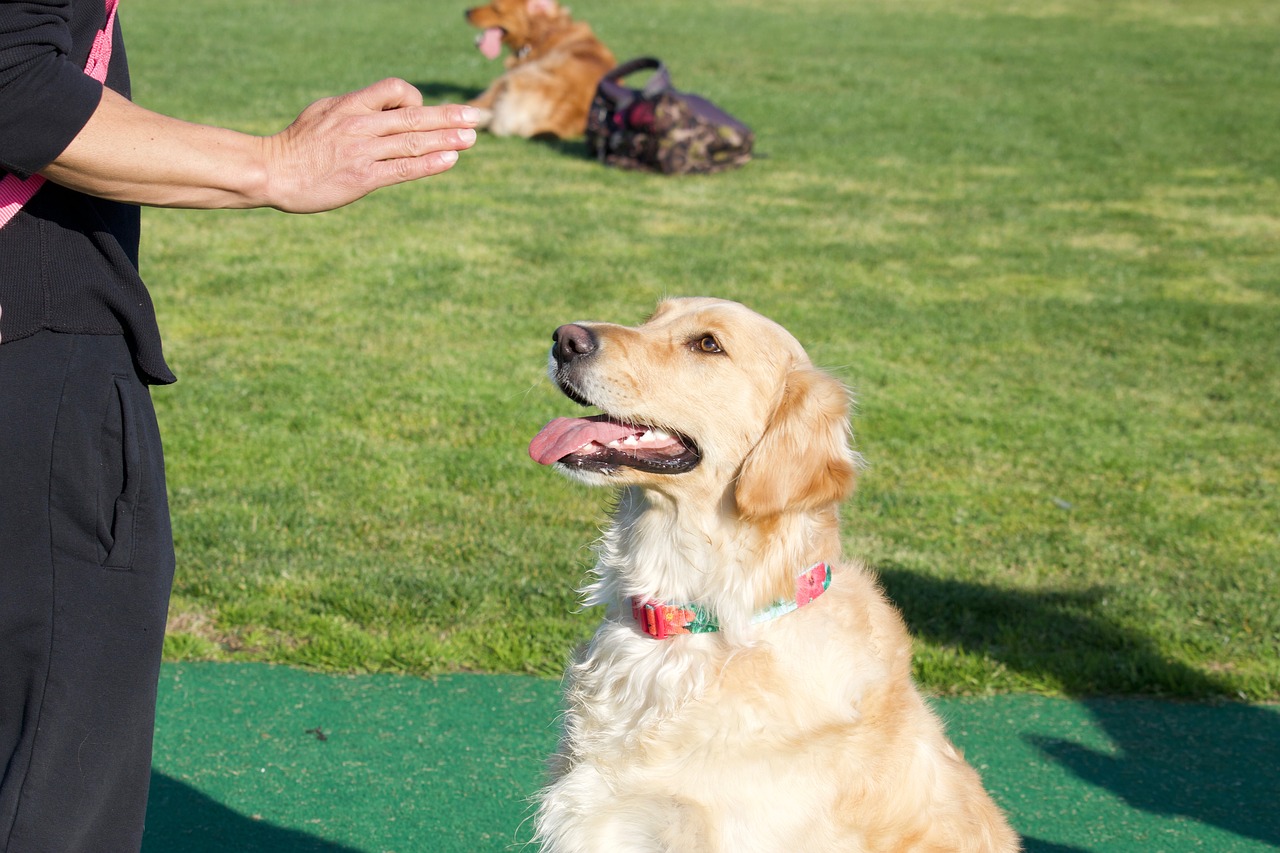2020-12-28

If you see a dog in a place where normal dogs do not have access and it always stays at the side of its handler, there is a good chance that you have just come in contact with a service dog who works hard. Service dog breeds are diverse. One of the most popular breeds for service dog work is the Golden Retriever because of his trainability, intelligence, loyalty and willingness to please.
These service dogs must be able to enter public places and behave gently in all private environments. They must be trained to ignore any distractions around them and always accompany their disabled handlers. Most Golden Retriever service dogs are carefully selected either at the puppy age or after a character test. In addition to the rigorous obedience training, they must master some special tasks for different needs. For example, the guide dog should learn how to open and close a door for blind people. And people who are paralysed need to use a wheelchair with the help of a service dog.
Can my Golden Retriever be a service dog?
Golden Retrievers possess several characteristics that make them excellent service dogs. However, not all Golden Retrievers are qualified to be a service dog. To be a Service Dog candidate, a Golden Retriever should have the following traits at least:
• Has a calm temperament that fits the job you expect him to handle.
• Be energetic to handle your level of activity.
• Obtain the strength and intelligence to dependably assist you.
• Be capable focus on a task and ignore distractions.
• Doesn't react negatively if strangers approach.
These are the most important pieces of determining whether or not your Golden Retriever will make a Service Dog candidate.

When should I start training my dog?
The Golden Retriever service dog you saw may look strong and vigorous, so does that mean that every service dog has to go through training until he grows up? NO. But you have to start the training as soon as possible. And it is ideal to start the training of a puppy from the age of six months, although an adult candidate is also suitable for studying and training. A puppy less than six months old is too young to endure service training and build good habits such as barking.
The service dog training will take at least 120 hours, so you need to spend a lot of time on it. This is a challenge not only for the dog but also for the owner.
To make sure your puppy is a good service dog candidate, you better do a temperament test. Only if the result shows that your dog is not aggressive, fearful, timid, or nervous will it be easy for him to be trained and behave gently. Well done, if you can confirm that your dog is confident and easy-going! You can now train your puppy. It is necessary to get some tools together, including leashes, treats or toys for a reward, and water for outdoor training.
There are two phases of the training: initial training and access to the public.
Phase 1: Initial Training
1. Choose a reward
For the primary exercise, you should encourage him to accomplish the tasks by giving him treats or a toy. Assume that your puppy is a child. He is easily motivated and attracted by treats or snacks. Find out what he prefers and reward him for good behavior and progress.
2. Prepare the training list
Make a plan before you start the exercises. Decide which commands you want to teach your puppy every day. Here are some common useful commands: “Watch me”, “Sit”, “Down”, “Stay”, “Heel”, “Come”, “Off” and “Take it”.
3. Reduce distractions
Find a peaceful and quiet place where there are few people or animals, or objects that can distract his attention, so he can listen to your command.
4. Practice in context
After learning these commands, you should give your puppy a context in which to execute them, such as picking up the objects, heeling aside you while being off-leash at home.
5. Create some entertainment
Make your training funny. Do not put too much pressure on your dog. Teach the commands like a game with subsequent rewards. Obedience should not be an additional burden on your dog, as this is the key to service dog work.
6. Practice frequently
To strengthen his memory and deepen the instructions, you should repeat the exercises frequently with your dog. Prepare ongoing tasks for a full day, but take a break from time to time.
Phase 2: Access to the public
1. Socialize early and often
In order for your dog to behave in public like a service dog, you should take him to meet other people and dogs. It is important that he comes into contact with strangers, children, aggressive dogs, and other unpredictable situations as he is now able to listen to your commands.
2. Switch to different places
In addition to the normal public places, you can take your Retriever to places where dogs are normally not allowed, such as restaurants, stores, and libraries. Protecting the owners in these places is also a task for service dogs.
After all the training completed, it’s time to begin to serve the handlers. It’s advisable to certificate your golden retriever as a service dog and wear a vest, in case of others’ suspicion.

What kinds of jobs are suitable for a Golden Retriever?
• Mobility Support Service Dog - assist their partner get into and out of a wheelchair or vehicle; pick up the items on the floor; switch lights.
• Guide Dog - help the blind or individuals with visual impairments to navigate their surroundings.
• Diabetic Alert Dog – detect and alert a person with diabetes about blood sugar level.
• Seizure Alert/Response Dog - alert people about an individual having a seizure or alert their partner when they are about to have a seizure.
• Allergy Alert Service Dog – detect and alert someone about the presence of a life-threatening allergen.
• Hearing dog - alert the deaf orindividuals with hearing impairment of key sounds.
• Psychiatric Service Dog - Interrupt dangerous, repetitive behaviors of someone with mental health problems; provide companionship.
Conclusion
In short, Golden Retrievers have many traits that match the Service Dogs' characteristics — be stable and calm in all situations and environments, willing to learn, and have the intelligence to learn complicated behaviors. They have to readily do the same thing, day in and day out.